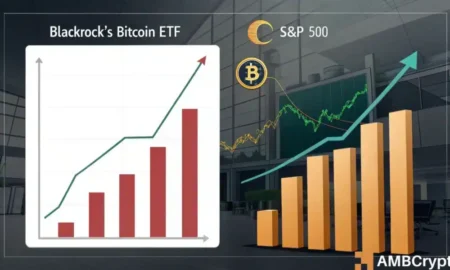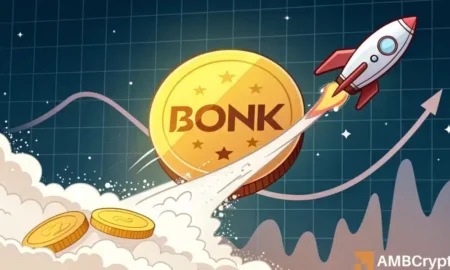Ethereum Faces Major Pressure: Analyzing the Current Market Dynamics
Ethereum (ETH) has recently crossed a critical threshold by breaching multi-year support levels, leading to significant movements among long-term holders and investors. This pivotal shift has triggered reactions from previously dormant whales who are now unwinding their holdings, raising concerns about the asset’s future trajectory. With the price of ETH dipping below $1,500 for the first time in two years, the implications of these developments are complex, reflecting broader market sentiments and on-chain metrics that suggest potential undervaluation.
The immediate catalyst for the decline appears to be the decision by long-term holders (LTHs) to liquidate significant portions of their holdings. Notably, a notable Ethereum investor recently sold 7,974 ETH at around $1,479, totaling an exit valued at approximately $11.8 million. Such large sell-offs contribute to the overall weakening of Ethereum’s position in the market, which has seen a steep monthly decline of 17.52%. This performance positions ETH as the weakest asset among high-cap cryptocurrencies, prompting questions about the sustainability of its price and the behavior of market participants.
As the price dropped below the crucial $1,500 mark, historically a significant support level, Ethereum’s long-term holder Net Unrealized Profit and Loss (NUPL) indicator also flipped to a negative position, entering the red zone for the first time in three years. This shift is particularly alarming, as the previous occurrence in June 2022 led to a drastic price drop, culminating in a low of $883 within the next month. The current situation starkly mirrors these events, indicating that the risk of another capitulation event is increasing as major holders continue to offload their investments.
The Market Value to Realized Value (MVRV) ratio adds another layer of complexity to the situation. Currently sitting at 0.76, this metric suggests that ETH is trading at a 24% discount compared to the average acquisition price of all coins. Such undervaluation historically serves as a precursor to potential recoveries, with past instances indicating that aggressive buy-ins could follow if market conditions stabilize. However, the prevailing market Fear, Uncertainty, and Doubt (FUD) adds significant pressure, making investors more cautious and reluctant to capitalize on price dips.
In April alone, net inflows to Ethereum spot exchanges reached around 2 million ETH, highlighting the reluctance of investors to reinvest amid the current market climate. This behavior underscores a hesitancy to engage in accumulation, which could heighten the risk of further declines. Without a shift in this trend towards accumulation, Ethereum’s outlook remains precarious, with potential corrections looming below the $1,400 mark.
The lingering effects of long-term holders unwinding positions combined with fragile market liquidity mean that Ethereum’s current structure resembles that of its 2022 breakdown. Such parallels raise alarms about the potential for a significant capitulation as market sentiments shift and investors react to unfolding dynamics. As ETH navigates through these turbulent waters, the future remains uncertain, with volatility likely to continue as market players reassess their strategies and positions in the face of ongoing pressure.
Understanding these dynamics is essential for investors and stakeholders in the Ethereum ecosystem, as they illustrate the complex interplay between market sentiment, on-chain metrics, and price performance. As the landscape evolves, keeping a close watch on whale activities and MVRV movements will provide crucial insights into potential shifts in the market direction, paving the way for informed decision-making in the crypto space.
















